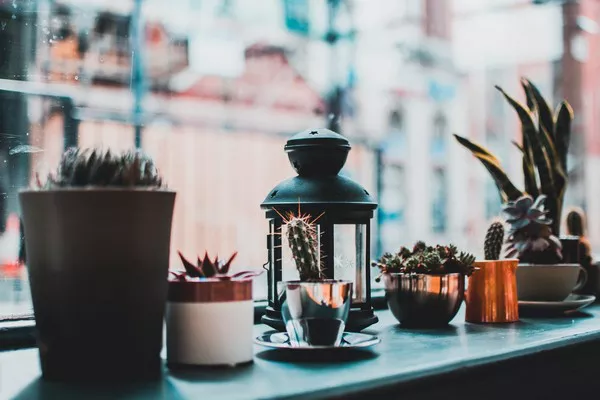Repotting is an essential task in the care of succulents, as it provides them with fresh, nutrient-rich soil and adequate space for healthy root development. However, watering after repotting requires special attention, as succulents may be more vulnerable to overwatering during this period. In this article, we will explore the best practices for watering succulents after repotting, along with choosing the right potting mix, adjusting watering frequency, and signs of proper hydration.
1. Choosing the Right Potting Mix
The foundation of successful succulent care after repotting lies in selecting the appropriate potting mix. Consider the following factors:
Well-Draining Soil: Succulents are susceptible to root rot when exposed to excessive moisture. Choose a well-draining potting mix that consists of materials like coarse sand, perlite, and pumice. This ensures proper aeration and prevents water from accumulating around the roots.
Avoid Heavy Soils: Soil that retains too much moisture, such as regular garden soil or potting mixes designed for moisture-loving plants, can suffocate succulent roots. Heavy soils do not allow excess water to escape, leading to root rot and other water-related issues.
2. Understanding the Repotting Shock
Repotting is a stressful event for succulents, and they may experience a period of shock during which their root system adapts to the new environment. To minimize the impact of repotting shock, be cautious with watering during this time.
Delay Watering: After repotting, it’s best to delay watering for a few days to allow any damaged roots to heal and prevent further stress. During this period, the succulent will rely on its existing water reserves.
Gradual Acclimation: Slowly introduce the repotted succulent to its new environment. Avoid placing it in direct sunlight immediately after repotting, as this can exacerbate the shock. Gradually increase light exposure over several days to help the plant acclimate.
3. Watering Frequency After Repotting
Adjusting the watering frequency after repotting is crucial to avoid overwatering. Follow these guidelines:
Monitor the Soil: Before watering, check the moisture level of the soil. Insert your finger about an inch into the soil; if it feels dry, it’s time to water. If it still feels damp, hold off on watering.
Slowly Resume Watering: After the initial period of delayed watering, gradually reintroduce water to the succulent. Start with small amounts and increase gradually as the plant shows signs of recovery.
Avoid Frequent Watering: Succulents generally prefer infrequent but deep watering sessions. Water thoroughly and allow excess water to drain out of the pot’s drainage holes. Avoid frequent light waterings, as they can lead to shallow root growth.
4. Watering Techniques for Repotted Succulents
Proper watering techniques are essential for the health of repotted succulents. Follow these tips:
Bottom Watering: To ensure even moisture distribution and prevent overwatering, consider bottom watering. Place the potted succulent in a shallow tray filled with water, and let the plant absorb water through the drainage holes at its own pace. This method prevents water from getting trapped around the roots.
Avoid Overhead Watering: Refrain from watering the foliage of repotted succulents, especially immediately after repotting. Overhead watering can lead to trapped water between the leaves, increasing the risk of fungal diseases.
Drying Time Between Waterings: Allow the soil to dry out completely between watering sessions. This promotes healthy root growth and prevents the onset of root rot.
5. Signs of Proper Hydration
Recognizing the signs of proper hydration in succulents is essential to ensure you are watering effectively:
Firm and Turgid Leaves: Properly hydrated succulents should have firm, plump leaves. Gently press a leaf between your fingers; if it feels firm and resilient, the plant is well-hydrated.
No Wrinkling or Shriveling: Underwatered succulents often exhibit wrinkled or shriveled leaves. If you notice these signs, it’s time to water the plant thoroughly.
Minimal Leaf Drop: A hydrated succulent will have minimal leaf drop. However, during the repotting process, some leaf loss is normal due to the stress the plant undergoes.
6. Common Mistakes to Avoid
When watering succulents after repotting, certain mistakes can lead to adverse outcomes. Here are some common errors to avoid:
Overwatering: The most common mistake is overwatering, especially after repotting. Avoid the temptation to water too frequently, as this can drown the roots and lead to root rot.
Improper Drainage: Ensure that the pot has sufficient drainage holes to allow excess water to escape. Inadequate drainage can trap water and cause damage to the roots.
Conclusion
Watering succulents after repotting requires careful attention and consideration of the plant’s needs. By choosing the right potting mix, understanding the repotting shock, adjusting watering frequency, and using proper watering techniques, you can help your succulents thrive in their new environment. Remember that each succulent species may have unique requirements, so observe your plants closely and make adjustments as needed. With proper care and attention, your repotted succulents will continue to flourish and bring joy to your indoor or outdoor spaces for years to come.


